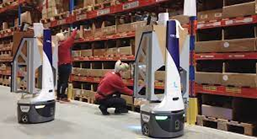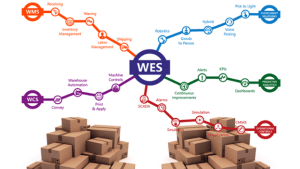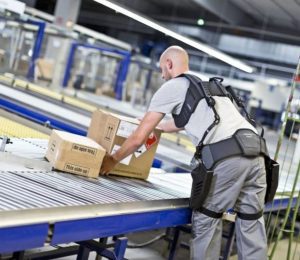The first automated warehouse systems were primarily designed to help streamline the process of moving goods from one place to another. Over time, these systems became more sophisticated and began to incorporate a wide range of technologies including conveyors, automated storage and retrieval systems, and robotic picking systems.
Automation Trends to Watch
Today, warehouse automation is a critical part of business operations, and it continues to evolve rapidly as new technologies and innovations emerge. From autonomous vehicles and drones to advanced machine learning algorithms and artificial intelligence, the future of warehouse automation is full of exciting possibilities. We’ll focus on a few key automation trends that are worth keeping an eye on.
Next-Generation Robots
Next-generation robots are indeed a game changer in the world of warehouse automation. These robots can work alongside humans safely or be completely autonomous. In many cases, they can be controlled and monitored remotely.
work alongside humans safely or be completely autonomous. In many cases, they can be controlled and monitored remotely.
AI-driven robots can dramatically impact a warehouse, as many companies realize the immediate benefits of using this technology. Increased accuracy, a safer and less fatigued work environment, and reduced labor costs are just a few benefits companies with next-generation robots can achieve.
Warehouse Execution Systems
Moving on to warehouse execution systems (WES), it’s important to note that these are not the same as warehouse management systems or warehouse control systems. A WES can coordinate labor and equipment in highly automated facilities, optimizing activity in the warehouse and working with a company’s WMS. It generates reporting by tracking and recording where everything is and optimizing the best way to move products around the warehouse. Think of it like a conductor guiding the orchestra through a challenging music arrangement. A WES is more focused on the human side of the warehouse to keep the flow at an optimum level. One thing to keep in mind is a WES needs to work with a WMS.
warehouse management systems or warehouse control systems. A WES can coordinate labor and equipment in highly automated facilities, optimizing activity in the warehouse and working with a company’s WMS. It generates reporting by tracking and recording where everything is and optimizing the best way to move products around the warehouse. Think of it like a conductor guiding the orchestra through a challenging music arrangement. A WES is more focused on the human side of the warehouse to keep the flow at an optimum level. One thing to keep in mind is a WES needs to work with a WMS.
Exoskeletons
This one is just plain futuristic. Beyond one of the most unusual emerging trend in warehouse automation, an exoskeleton is a personal protection system that supports the backs and knees of your pickers to help assist with lifting heavy objects. Not only does it help lifting, but an alarm will go off if the user tries to lift more than they should. The benefit is next-level protection from injury. It will be interesting to see if this becomes the norm soon or becomes moot as robots perform the lifting tasks.
exoskeleton is a personal protection system that supports the backs and knees of your pickers to help assist with lifting heavy objects. Not only does it help lifting, but an alarm will go off if the user tries to lift more than they should. The benefit is next-level protection from injury. It will be interesting to see if this becomes the norm soon or becomes moot as robots perform the lifting tasks.
Finally, integration between different types of warehouse automation can create more efficient and flexible workflows that can adapt to changing demand patterns.
I hope this information is helpful to you! If you want to learn more about any of these technologies or how you can integrate them into your operations, contact Abel Womack today.



Leave a Reply
You must be logged in to post a comment.